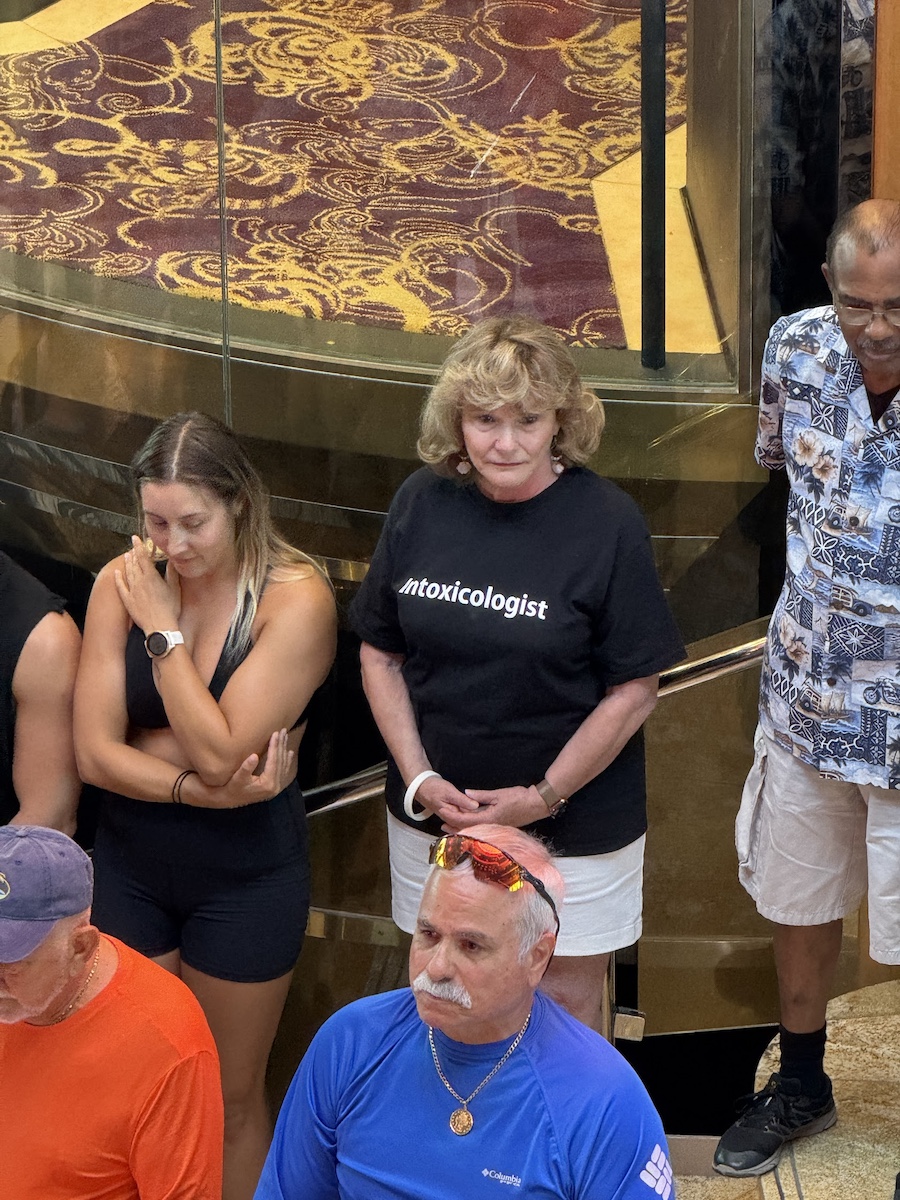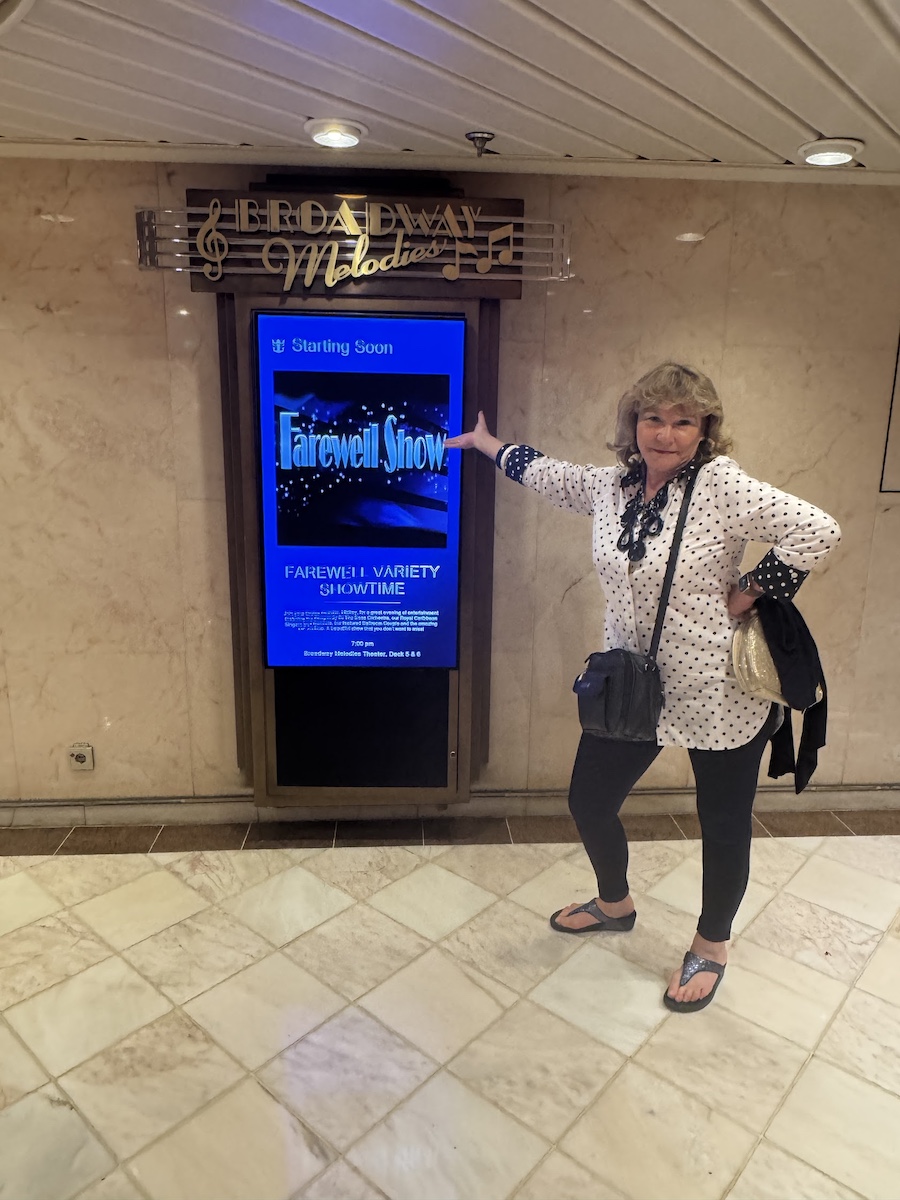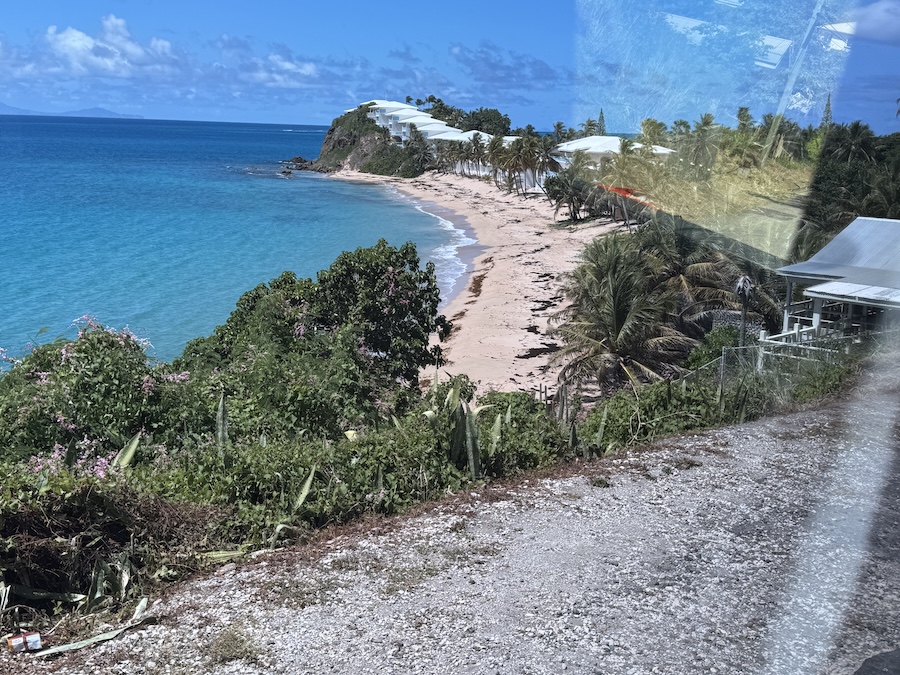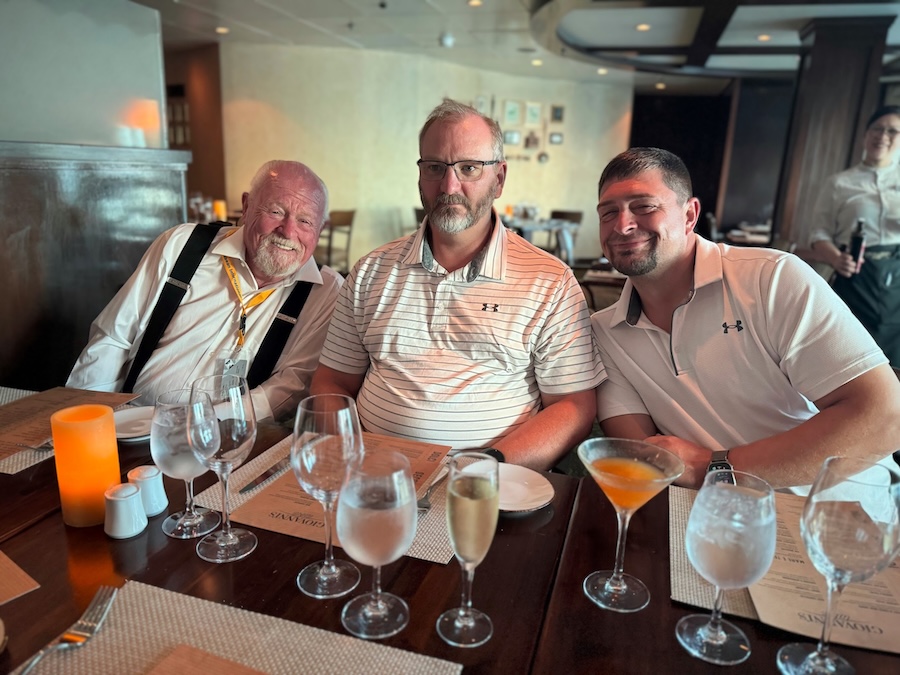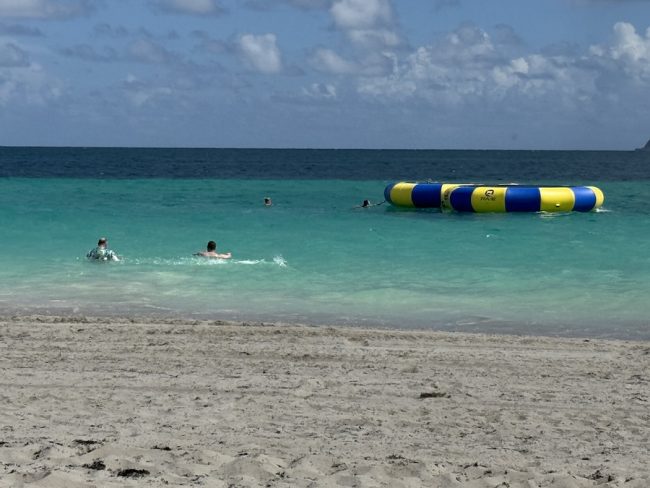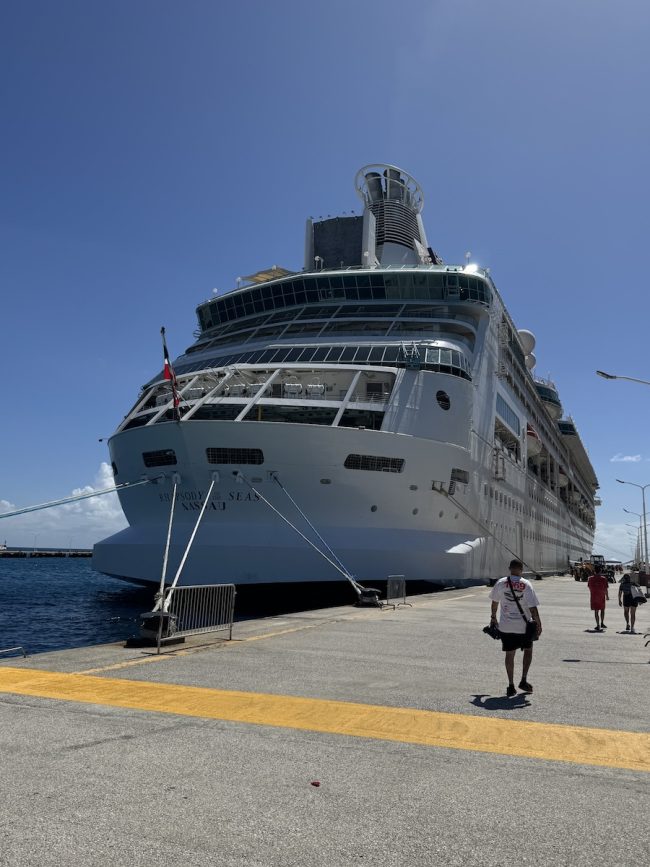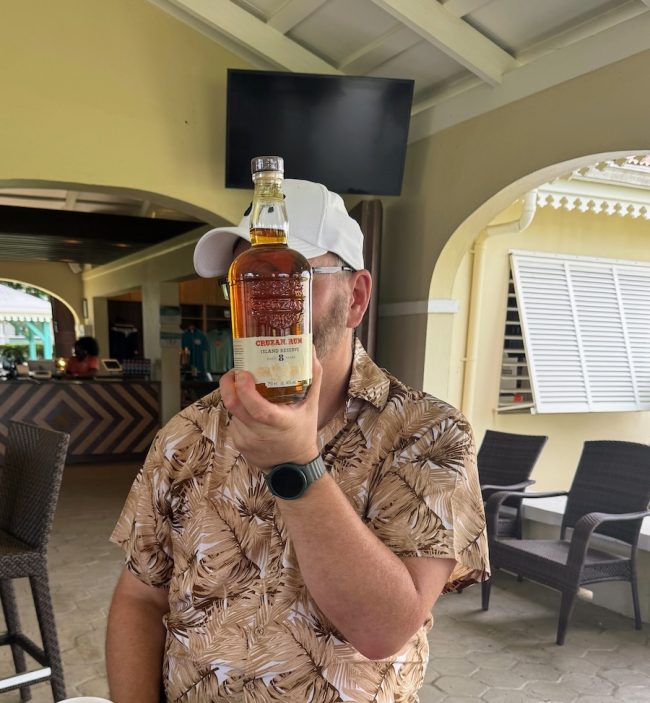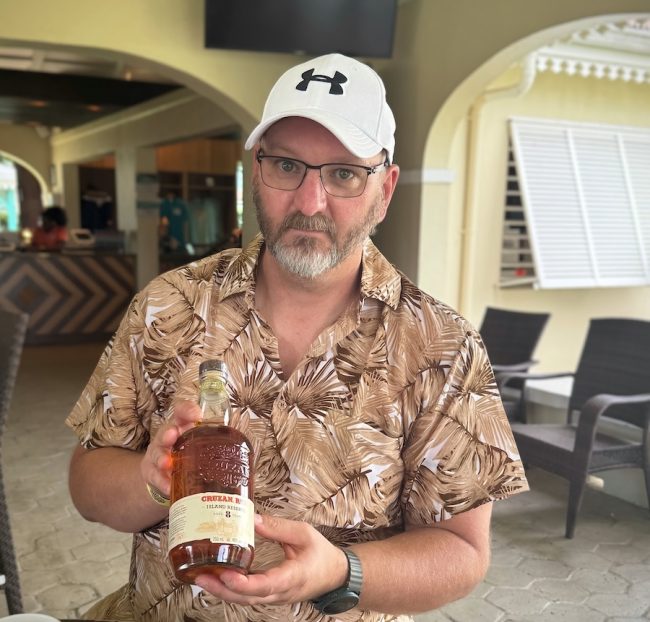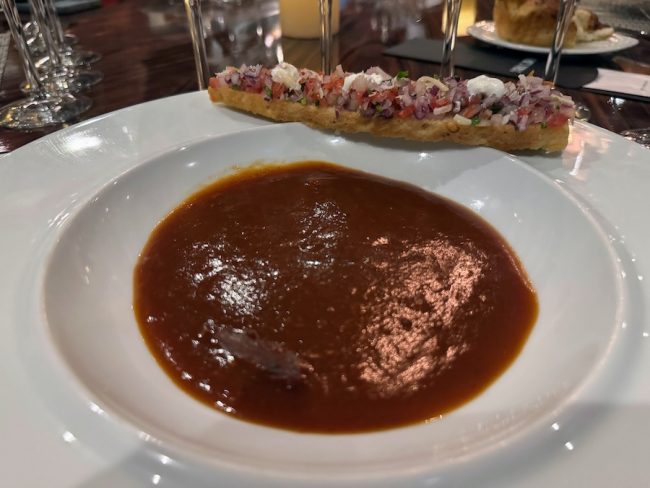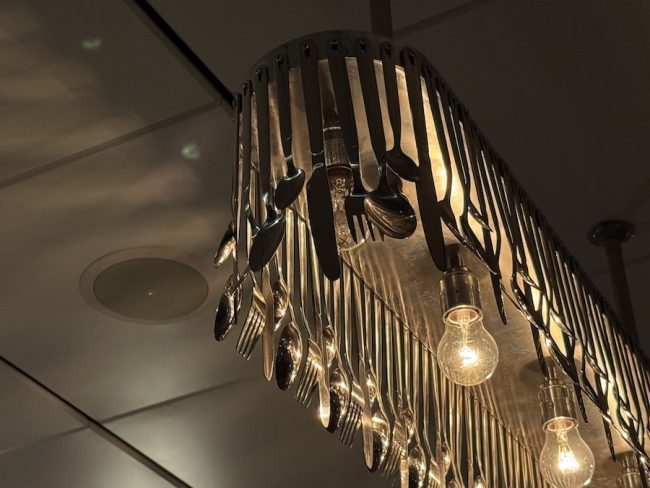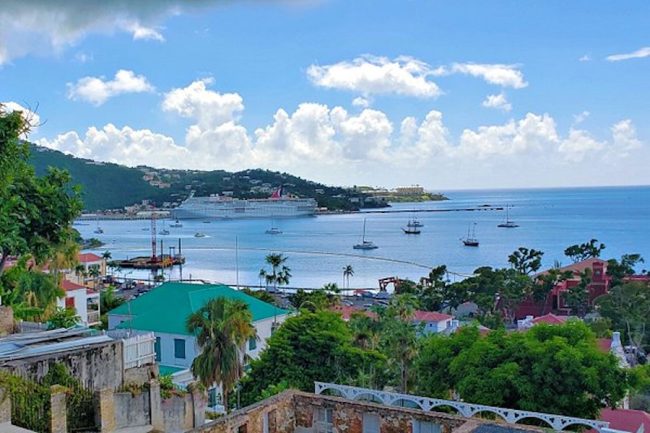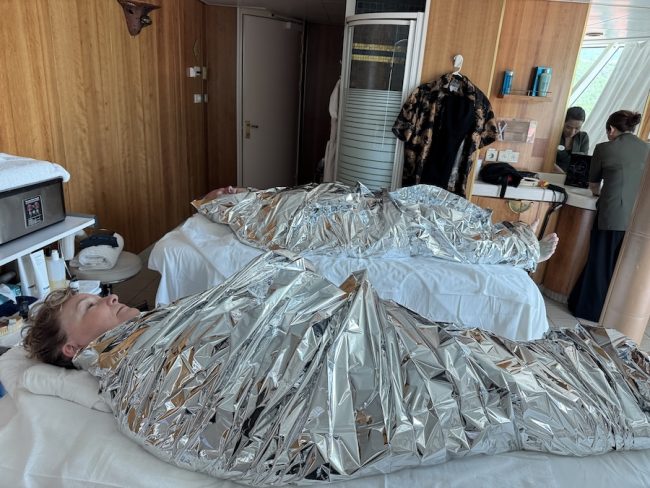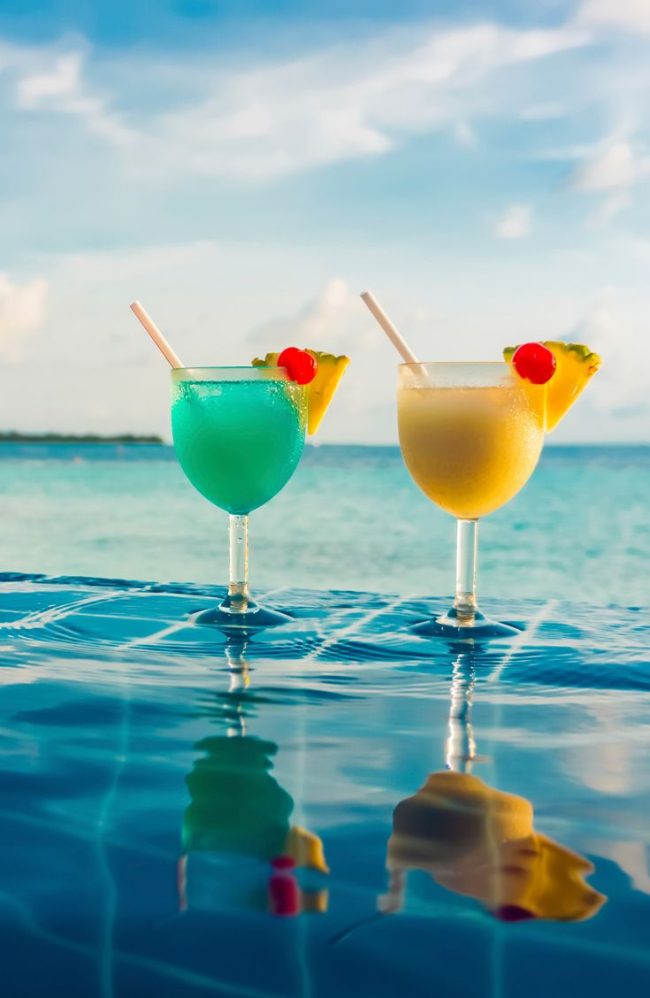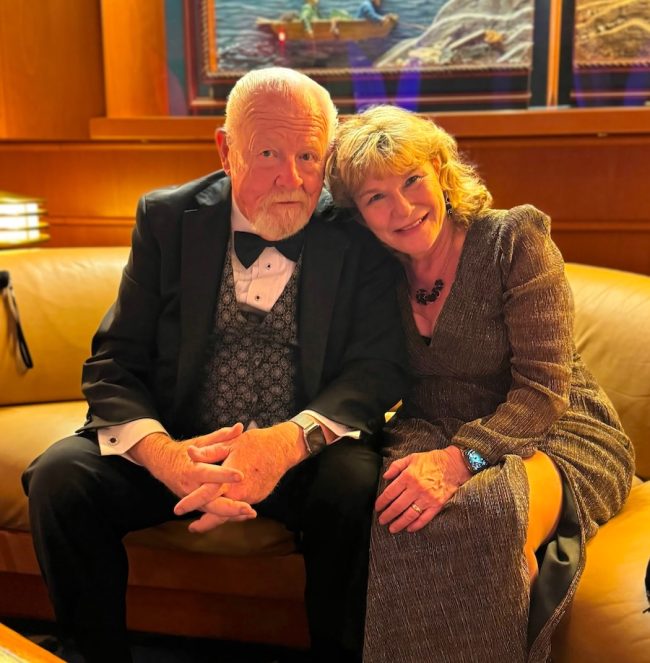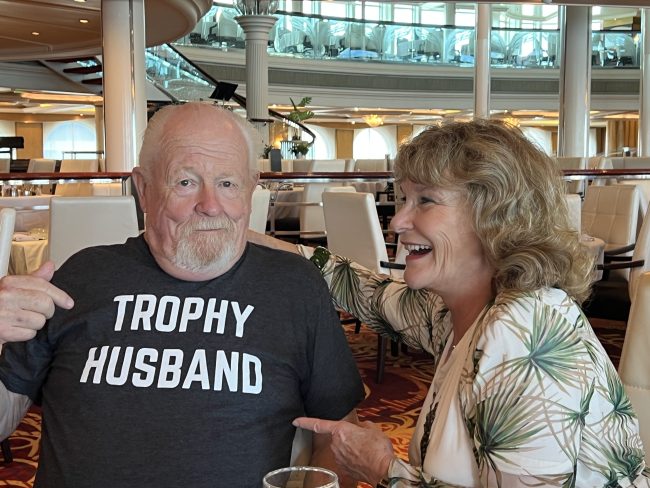
Bridgetown, Barbados, was named for bridges that crossed the Careenage. It was Barbados’ capital and a UNESCO World Heritage site, featuring the world’s third-oldest parliament, founded in 1639. Known for its historic architecture, vibrant markets, and role in the sugar industry and transatlantic slave trade, Bridgetown also boasts the Nidhe Israel Synagogue. The island is a significant location for rum production.

Our stateroom provided a magnificent view of the city.
There was a lot of construction underway, as Barbatos is now a major tourist attraction. The population is approximately 242,000 people, and the major economic sectors are tourism and offshore finance.

There were boats everywhere.
We arranged for a taxi (van) to drive us around the island for the entire day. We first stopped at a wild animal reserve. Jon and Sarah has been here many times so they knew their way around.

The Barbados Wildlife Reserve is a sanctuary and research center located on the island of Barbados, renowned for its free-roaming green monkeys, tortoises, and deer within a mahogany forest. Visitors can enjoy a self-guided walk through the trails, observe animals such as agoutis and peacocks, and witness the monkeys’ afternoon feeding times. The reserve was established in 1985, and its infrastructure was built using local coral stone from old sugar factories.
There were a lot of “Red-Toed Turtles” who were NOT afraid of us humans. They took the same pathways as us and just looked up with amazement.
We heard two turtles talking: The first turtle said he was crossing the road when two snails mugged him. When the police show up, they ask him what happened. The shaken turtle replies, “I don’t know. It all happened so fast.”
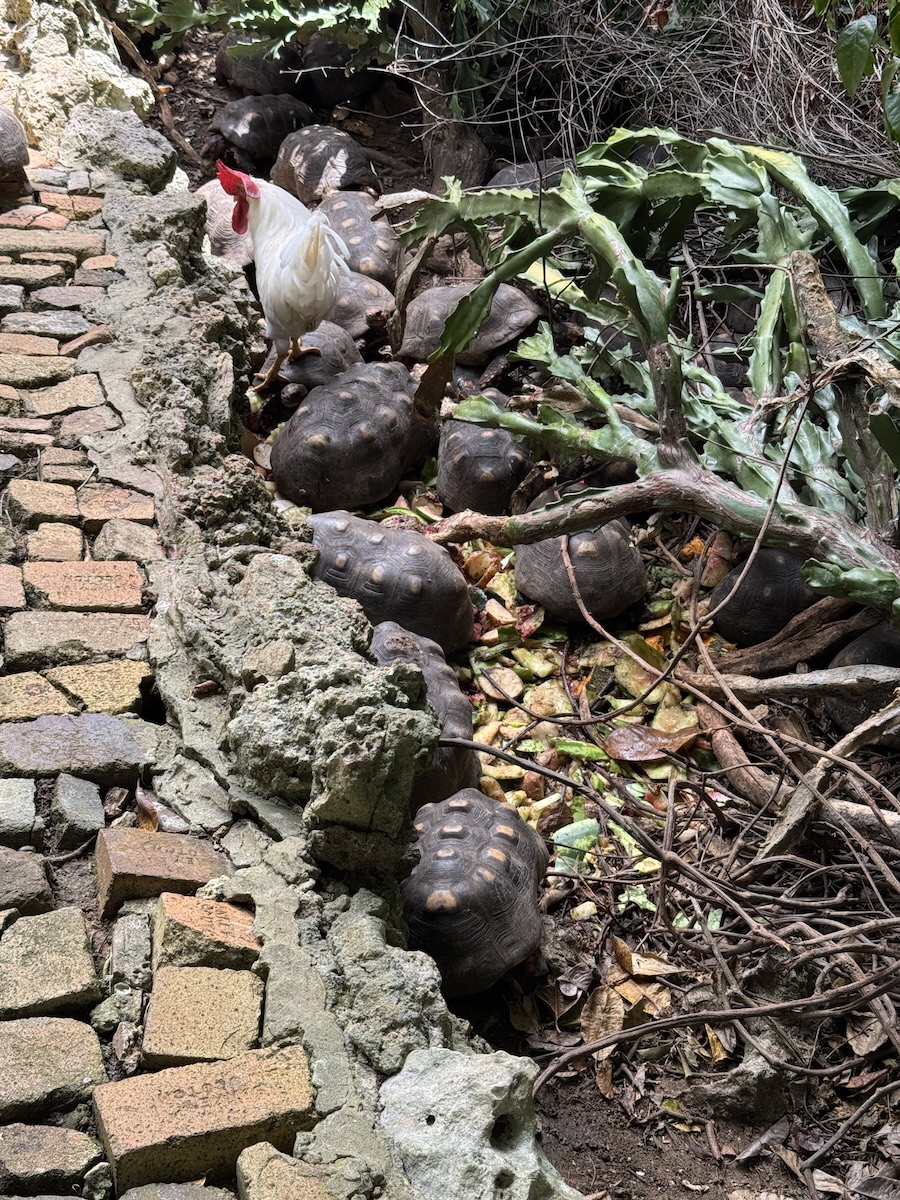
There were a total of seventeen, just this group!
Time for a drink!! They seemed to like the local water!

I was going to join them until I found out it was water!
This building was used for sugar cane processing 100 years ago. Now it is used for telling the story behind this remarkable wildlife preserve.
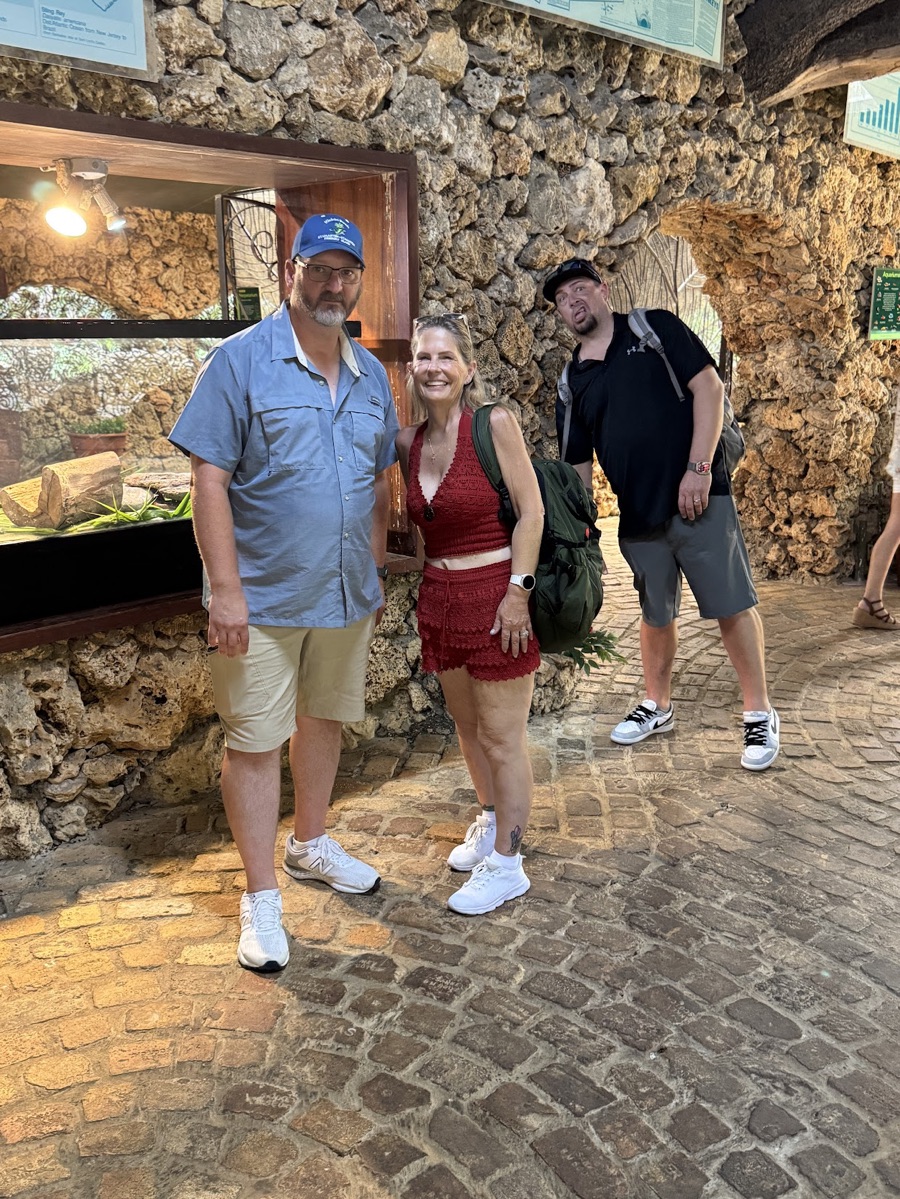
Jon photobombed the image!
Do you see the Iguana?
Iguanas are surprisingly resilient, able to survive falls from great heights by using their tails to propel themselves away from danger. They also possess a unique “third eye” on their heads, which helps them detect light and predators. These herbivores also communicate with each other through head bobs and can detach their tails to escape threats, which then regrow

He was in search of lunch; we were too big for him to bite us!
This Iguana is acting weird! I think I have a reptile dysfunction.
The aviary featured a dozen different types of birds on display for visitors. This little parakeet interestingly entered his nest!

Knock Knock, anybody home!!
Why is it called a parakeet if there’s only one of them?
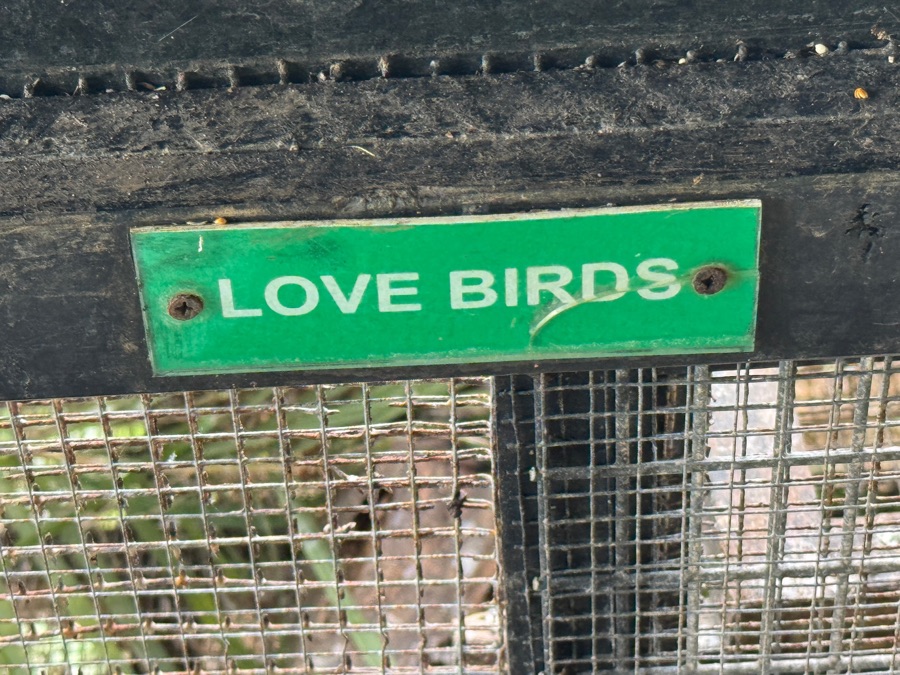
The cage was empty!
After a few minutes, we found them. They had flown the coop!

Get a room!!
Before leaving, we stopped for a drink at thePiña. I enjoyed a Coke and a Piña Colada.
BTW, the Piña Colada, meaning “strained pineapple” in Spanish, is Puerto Rico’s national drink, officially declared in 1978, and is believed to have been created in 1954 by bartender Ramón “Monchito” Marrero at the Caribe Hilton. The iconic tropical cocktail features rum, coconut cream, and pineapple juice, and iPiñalebrated on International Piña Colada Day on July 10.

Jon takes a small rest!
Back in the Taxi, we headed for a run distinnary/plantation.
St. Nicholas Abbey in Barbados is renowned for being one of only three remaining Jacobean mansions in the Western Hemisphere, dating back to 1658, and for its active role as a rum distillery that produces premium Barbados rum. The estate features a steam railway, a working rum distillery, and offers tours of the historic great house, which showcases its Jacobean architecture and a collection of antiques.
The steam locomotive that used to haul the sugar cane is still in operation and runs around the property regularly.
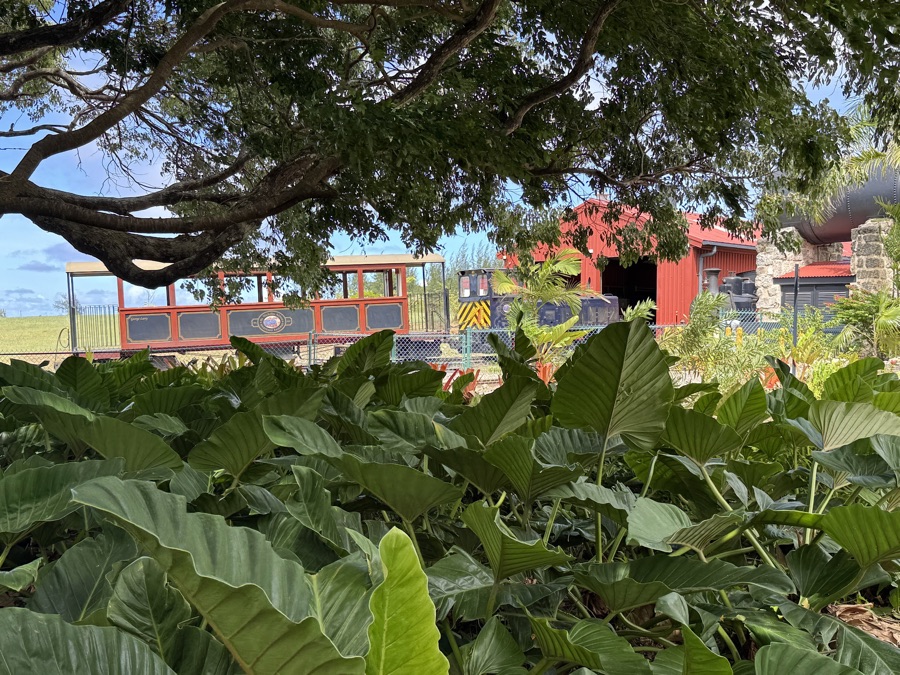
Toot toot!
After walking through the great house, we went to the tasting area. We met the owner’s son, Simon, who was visiting with the visitors. He had been in a serious car crash right after 9/11 and was still recovering his speech capabilities. He was funny and very delightful. Mary and I gave “the boys” each a bottle of their 27-year-old rum.

Slurp, burp, and a story behind each tasting.
Mark and Colleen gave us a bottle of their new product. We now have some gin!

The room smelled like rum; we could have gotten a buzz on just sitting there.
Next, we shizzed down to the bay where Sarah and Jon got married eight years ago. However, the driver insisted that we go to the Cherry Three Hill Reserve, where they are replanting a mahogany forest.
Cherry Tree Hill Reserve in Barbados is renowned for its stunning panoramic views of the Scotland District and the Atlantic coast, having historically served as a British military signal station. The area, located around 850 feet above sea level, was once covered in cherry trees but now features mahogany trees.

The second-highest point on Barbatos.
The view was quite impressive, and the sea breeze was powerful enough to cool us down even though it was 87 degrees outside!

Barbados is the easternmost island in the Lesser Antilles. It is 21 miles (34 kilometers) long and up to 23 kilometers (14 miles) wide, covering an area of 439 square kilometers (169 square miles).

The English got here first, so they drive on the wrong side of the streets to this day!
Now we get serious about going to where Jon and Sarah were married. It was 3:00 pm, and the kids were getting out of school, so traffic was heavy.

What a magnificent group!!
We made it, and as the rain was threatening, we did NOT walk all the way down. Jon and Sarah were married by the palm tree in the background.
The kids went shopping when we returned to the ship. Mary and I went to the VIP Lounge and enjoyed an adult beverage. We had the concierge make dinner reservations for us at 6:45 pm in the main dining room.
As we prepared to leave, we witnessed a fantastic sunset.

It almost looked like the ship was on fire!
Tonight was another “dres your best” night, but I did not wear my tux; I opted for dress pants and a bright purple shirt.
The menu was special this evening, so we started with escargot (snails). I sent my plate (after I devoured the snails) to Sarah, who loves garlic. We were not bothered by witches or demons the rest of the evening. I did notice that the freshest flowers around the ship wilted as Sarah walked by!

This is what happens when a snail mugs a turtle.
We had another wonderful evening with the kids.

They were allowed out of their room IF they promised to behave!
Who else had a wonderful time? Duh! Mary and I kept the table in stitches with our “humor”.

I love that girl!
Then came the Baked Alaska.
Baked Alaska trivia includes its likely creation to celebrate the U.S. purchase of Alaska from Russia in 1867, the name being coined by Charles Ranhofer of Delmonico’s, and its origins in the French “Omelette Norvégienne”. The dessert’s paradoxical hot-and-cold nature comes from ice cream insulated by meringue, which is then browned, with the name a metaphor for the chilly Alaskan climate.
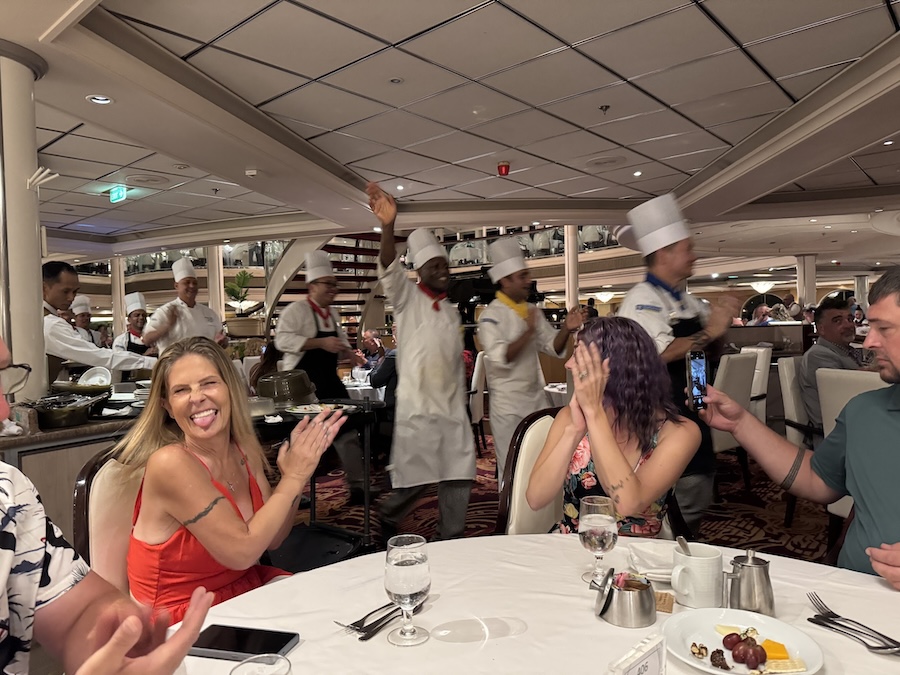
The waitstaff marched, and we applauded!
Everyone was tired, so we decided to go to the western-themed show.

We were photo bombed! Great fun!
We were told the show would be full of dancing and singing!

The lights were lowered; it was showtime!
Dang, they had the audience in the palm of their hands. We were tired just watching all that energy!

We departed the theater exhausted!
After dinner, we just had enough energy remaining to go to the Schooner Bar and say hello to Al, a new cruising friend. We went VFR to our cabin and fell asleep before our heads hit the pillows.

Tomorrow is a day at sea heading back to San Juan!






